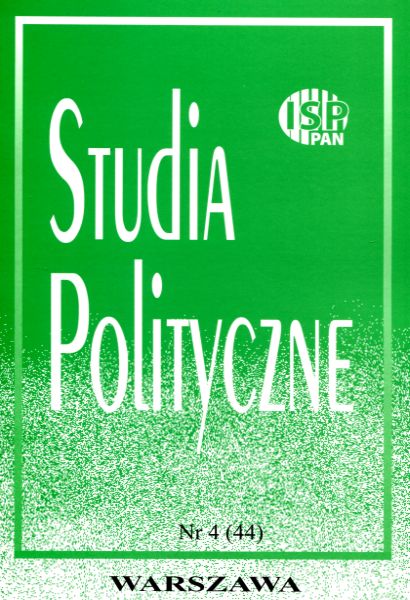LIKWIDACJA MŁODZIEŻOWEJ KONSPIRACJI ANTYSOWIECKIEJ W REPUBLIKACH BAŁTYCKICH ZSRS PO ŚMIERCI STALINA
The Liquidation of the Anti-Soviet Youth Conspiracy in the Baltic Republics of the Soviet Union after Stalin's Death
Author(s): Adam F. BaranSubject(s): Politics / Political Sciences, Local History / Microhistory, Political history, Recent History (1900 till today), WW II and following years (1940 - 1949)
Published by: Instytut Studiów Politycznych PAN
Keywords: youth; clandestine youth organizations; anti-Soviet; anti-communism; Lithuania; Latvia; Estonia; USSR; Soviet Union; Baltic republics
Summary/Abstract: Anti-Soviet youth organizations were an important component of the post-war landscape in the Soviet sphere of influence. Such initiatives occurred, among others, in the former western republics of the Soviet Union at least until the end of the 1950s, with the largest structures observed in Western Ukraine, Lithuania and Estonia. Research shows that the Committee for State Security (KGB) closed down more than sixty underground youth organizations in Lithuania between 1956 and 1959. Only a few of the revealed organizations developed their political programmes, issued illegal newspapers or conducted patriotic cultural and educational activity. The leaders and activists of such groups were exposed to criminal repression and others (including minors) were subjected to ‘preventive action’ (i.e. received warnings, were expelled from universities or condemned during meetings and in the press). During this period, organized resistance groups in Latvia were relatively small, yet they affected a lot of people. The main method of resistance of the Latvian underground youth organizations involved distributing leaflets and this was carried out particularly by minors. The exact number of post-war organizations and student groups in Estonia is not known. According to available findings, however, from April 1954 to the end of 1957, nine such organizations were revealed and shut down and eight further youth groups were closed down in 1958. The last political trial took place in late 1962. It is worth noting that even in the second half of the 1950s, several groups of this kind came up with the idea of the community of the Baltic countries against their common fate. It was promoted by the Moscow association of students from Lithuania, Estonia and Latvia under the name Club ‘Balticum’, established in 1956, and the dissident organization ‘The Baltic Federation’. Importantly, there were several well-known dissidents among the organizers and participants of the anti-Soviet youth conspiracy in Estonia in the second half of the 1950s.
Journal: Studia Polityczne
- Issue Year: 2016
- Issue No: 44
- Page Range: 27-45
- Page Count: 19
- Language: Polish

